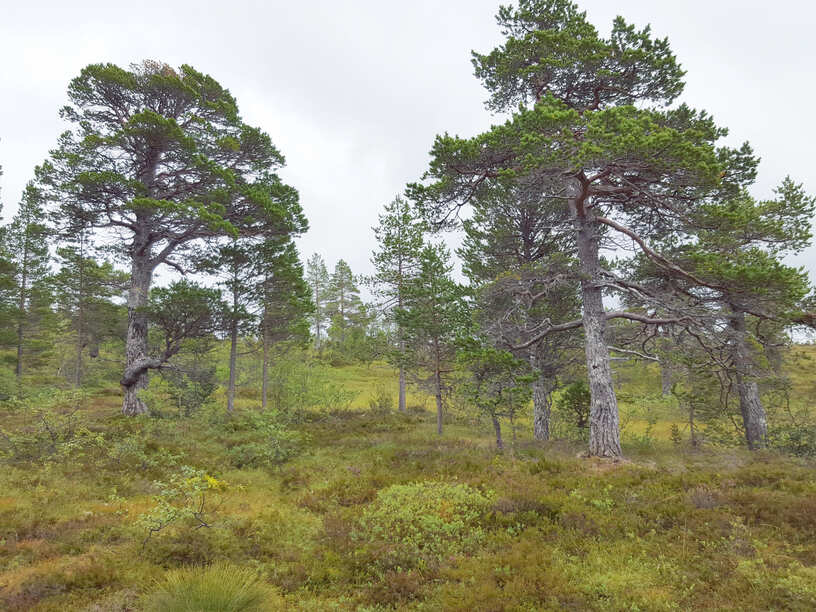Yes, pine trees can cause a rash. The primary culprits behind this reaction are the urticating hairs of the pine processionary caterpillar, which can cause contact urticaria and papular rashes. Additionally, the sap of pine trees contains an irritating material called colophony or rosin, which can cause a rash similar to one from poison ivy.
What are the Symptoms of a Pine Tree Rash?

Symptoms of a pine tree rash typically include:
- Itchy, red bumps or welts on the skin
- Redness and irritation
- Skin breakouts, often similar to those caused by poison ivy
- Onset time: Symptoms can appear within a few hours to a few days after exposure
- Duration: Symptoms can last from several days to several weeks
- Severity: Symptoms can range from mild to severe, with some cases requiring medical attention
How to Prevent a Pine Tree Rash?

To avoid a pine tree rash, follow these advanced preventive measures:
- Wear Protective Clothing:
- Wear long sleeves, long pants, and gloves when handling pine trees or their branches.
-
Change clothes immediately after handling pine trees to prevent the spread of sap or other irritants.
-
Clean and Prepare the Tree:
- Hose down the tree before bringing it inside to remove mold, pollen, and dirt.
- Let the tree dry for a few days in a garage or outside before bringing it into your home.
-
Use a tree shaker or vacuum to remove dead needles and debris.
-
Avoid Direct Contact:
- Avoid touching your face or eyes after handling pine trees.
-
Wash your hands thoroughly after handling pine trees.
-
Use Barrier Creams:
- Apply barrier creams or lotions to exposed skin before handling pine trees.
-
Reapply as needed to maintain protection.
-
Clean and Store Decorations:
- Dust off ornaments and decorations before using them.
- Store decorations in sealed containers to prevent dust accumulation.
What Products and Treatments are Recommended for a Pine Tree Rash?
- Barrier creams or lotions (apply as needed)
- Antihistamines or hydrocortisone cream for mild reactions
- Medical attention for severe reactions
What is the Cause of a Pine Tree Rash?
The primary causes of a pine tree rash are:
- Pine Processionary Caterpillar: The urticating hairs of the pine processionary caterpillar can cause contact urticaria and papular rashes.
- Pine Tree Sap: The sap of pine trees contains an irritating material called colophony or rosin, which can cause a rash similar to one from poison ivy.
Can Pine Trees Cause Allergic Reactions?
Yes, pine trees can cause allergic reactions in some individuals. The pollen and other components of pine trees can trigger allergic responses, such as:
- Sneezing
- Nasal congestion
- Itchy, watery eyes
- Coughing
- Difficulty breathing
People with pine tree allergies may experience these symptoms when exposed to pine trees, especially during the pollination season.
Conclusion
In summary, pine trees can indeed cause a rash in some individuals due to the presence of irritating substances, such as the urticating hairs of the pine processionary caterpillar and the sap of the pine tree itself. To prevent a pine tree rash, it’s essential to take precautions like wearing protective clothing, cleaning the tree, and avoiding direct contact with the tree and its decorations. If a rash does occur, it’s recommended to use barrier creams, antihistamines, or seek medical attention for severe reactions.
Reference:
- Skin Reactions on Exposure to the Pine Processionary Caterpillar (Thaumetopoea pityocampa): https://www.sciencedirect.com/science/article/pii/S1578219011000928
- Pine Tree Allergy | Causes, Symptoms & Treatment | ACAAI Public Education: https://acaai.org/allergies/allergic-conditions/pine-tree-allergy/
- What is Christmas tree syndrome? | Ohio State Health & Discovery: https://health.osu.edu/wellness/prevention/what-is-christmas-tree-syndrome.
